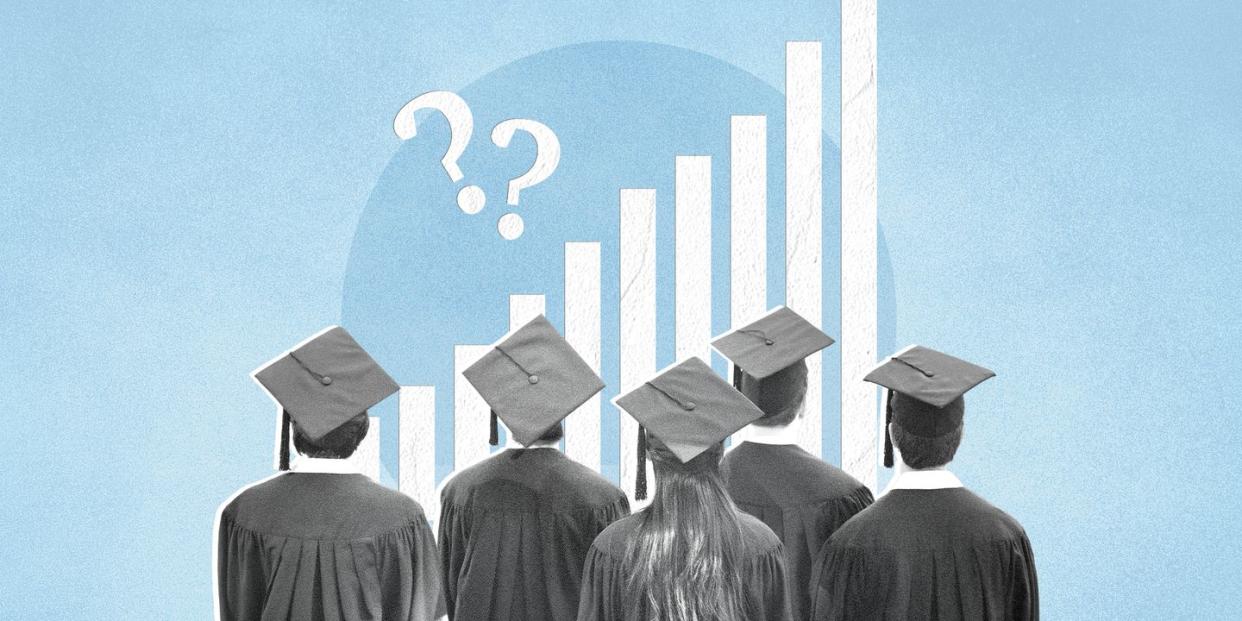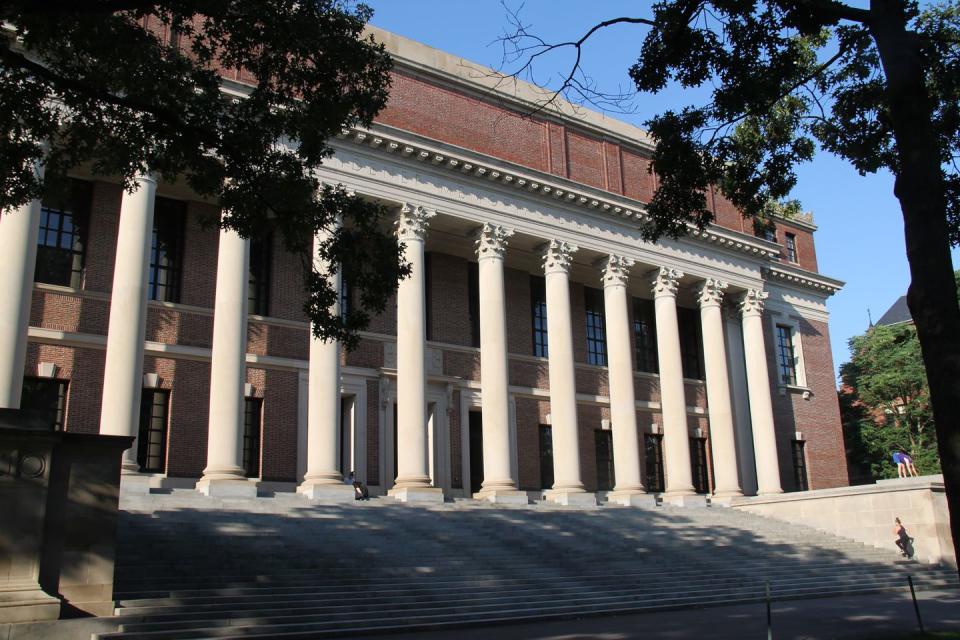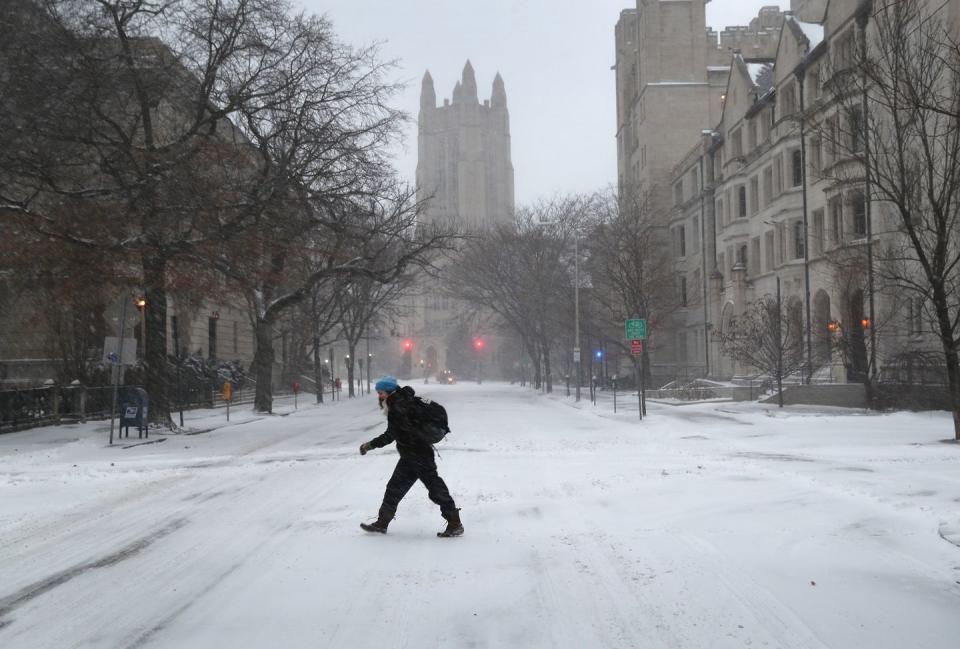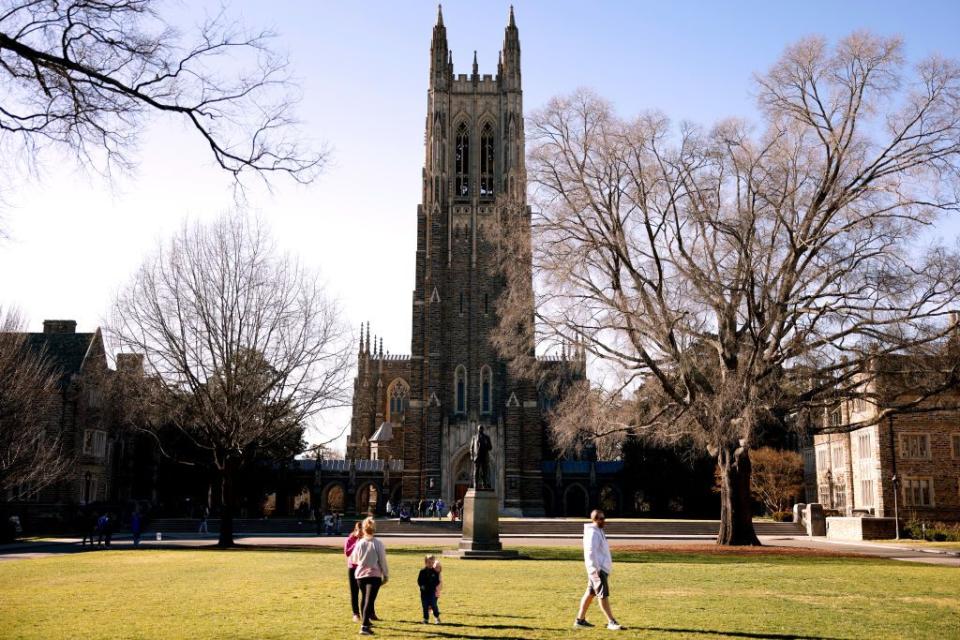Early Decision Results Are in For College Applicants—Was It a Bloodbath Again?

On Friday, December 15th, the first milestone of this year’s college admissions season arrived in the form of early decision and early action notices from universities around the country. For applicants, it was a day of experiencing a combination of reactions ranging from jubilation to despair to nervous optimism (for those who were deferred to the regular admission pool).
For colleges it was a time to tout more record-lows in the ever competitive college admissions derby: Duke announced it had admitted its lowest ever number of early applicants: 16.5 percent. Yale, too, made history by admitting just 10 percent of early applicants, the lowest in its history. Then there was Harvard, which had its second record low. It admitted just 7.56 percent—or 722 students out of 9,553 applicants—in its early round. Harvard also announced it had admitted the highest number of Asian American students early this year—29.1 percent—which may or may not be in reaction to the highly-publicized lawsuit filed against the university claiming a bias against Asian Americans. In other news, Columbia University experienced an unusual drop—9 percent—in early applicants, which also could be potentially related to a publicized controversy that led to the school’s precipitous fall from No. 2 on U.S. News and World Report’s annual college ranking to No. 18.

To try to contextualize all the news, Town and Country spoke with Jen Kaifesh, founder of Great Expectations College Prep, an independent college counseling company, in Los Angeles. The interview took place on Sunday, December 17th, as Kaifesh was jumping between calls with students and their families, helping them process the news, however good or bad.
When we last spoke in 2021 around this time for a story in T&C, you declared that the early admission round was a “dumpster fire.” Have things improved?
Jen Kaifesh: Yes. It’s been a lot of celebrating, a lot of relief. About 75 percent of our early decision kids got in. We’re actually all in shock, trying to figure out what happened. The schools are mainly Ivies and a lot of places like Northwestern, Rice, University of Miami, Southern Methodist University, Texas Christian University, places like that. But we had a lot of Penns and Columbia and Cornells and Yales that came through.
What do you attribute the turnaround to?
I think part of it is we got much more firm with students in terms of how and where they applied. If you want to maximize your chance, you need to be more thoughtful. It can’t be a Hail Mary. I always hear kids say, “You never know. I might get in.” No, no. We do know. So many schools going test optional just increased that sense that you could apply anywhere. It gives kids, I hate to say false sense of hope. The number of kids applying to more than 10 schools has doubled in the last decade. And the share of students who have applied to more than 20 has quadrupled. And then with early decision, people think there’s a higher likelihood that they’ll get in, so they apply ED to their dream school without thinking about why does the university want them? The students who actually took the time to really think through that did extremely well.
Is it a fallacy that schools that have gone test optional truly don’t care about test scores?
Look, you’re trying to give colleges as many reasons to say yes and as few reasons as possible to say no. So if you’re the kid who didn’t test and doesn’t have insert-some-impressive-activity-here-kind-of-thing, compared to a kid who does, that hurts you. It’s not that colleges don’t take the kids who are not testing or don’t have amazing leadership qualities. They will if other attributes are incredible. But people aren’t looking at it from the colleges’ perspective. Why would the college want one person over somebody else?
I think it’s a little easier to navigate knowing the role of testing at different schools. Because you saw certain schools were more likely to take the test optional kids, and others weren’t as much. It depends on the majors. If you’re applying for film somewhere, they’re not going to care as much about test scores. So there is an element of that in play. Northwestern, for example, has taken a ton of kids without test scores. But with the Ivies, the students we’ve seen, whom we worked with and who got in, pretty much all had high test scores. It doesn’t mean they’re not taking kids who are not taking the test, or deciding not to submit score. But I do think it’s just an extra data point for them.

In the wake of the Varsity Blues scandal, there was a sense that students who came from privileged, generally white, backgrounds had to prove themselves more than they historically have had to, in terms of being more than just rich kids with endless resources and opportunities? BLM also caused universities to put a greater emphasis on admitting more first-gen and diverse students. Do you think families who don’t fit into those sought-after categories are still feeling a crunch, or has that moment passed?
I would say that it is just more the accepted status quo now. I don’t think it’s really passed. I think it’s understood that you have to differentiate yourself. If you are an applicant who’s from an affluent, white family, what do you contribute? More and more schools this year had essays asking, How will you contribute to diversity on campus? [Some] white students who grew up in wealthy, safe areas, had very little to say. So then it becomes more about being creative. How can you spin your experiences in a way that—diversity doesn’t have to just be about race, ethnicity, etc. But I’ve had kids drop schools because they couldn’t figure out how to answer the prompts. Like, I don’t have “a thing.” But this is also what we do. We work with students younger, when they’re starting high school, on creating these stories, and saying, Look, what are you passionate about, what are you interested in? How can you have an impact on your community so there is something to write about. People who didn’t do that generally are at a disadvantage when it comes time to answer some of these questions.
To ask the question that so many parents are wondering, how did so many of your students get into Ivies? Were they truly exceptional students?
They are exceptional. But there was also a lot of a legacy factor there. At least one-third of the students that we saw get into those top ten schools had a direct connection, whether it was legacy, big donations, or people backing them in the admissions process.
So despite the headlines, legacy admissions is far from dead?
Legacy is alive and well at some schools more than others. As to how much it played into our acceptances is hard to tell because those kids who did get in who were legacies were also just incredible kids. So it’s hard to differentiate. The one thing we did not see is unqualified kids with connections getting in, which also means the system’s working on a certain level. But it does seem like, if you’re equally qualified to another candidate, and you’ve got that hook, you’re going to be the one to get in.
There are ways to use legacy to your advantage that’s not about just checking a box. It’s going back and meeting people at Homecoming. Or having a chat with a professor. Things that people don’t necessarily think of if they’re not legacies. So it’s not just about the donation or mom went here, dad went here. It’s more about the involvement with the school, and then your “why” essay is going to be that much better, because you can talk about when you sat down with professor so and so to learn about their research.

What about the kids who aren’t celebrating right now? What are you telling them?
There were very few actual rejections. There were a lot of deferrals. So then it’s about how do you handle deferrals, and what’s the next step? And how do you demonstrate your continued interest? Some of those kids are now in panic mode, adding new schools to their list, which is driving me a little nuts. They’re going, Well, if I didn’t get in there, maybe I should apply here, here, and here. I’m like, guys, it’s mid-December. We talked through all this. We always try to tell students, Look, you need to go into this assuming you will not get in. Everything else needs to be ready to go. The deadline’s in 10 more days. So you can’t be doing that over the holidays. Also you’re in such a bad headspace. But most of them are done, it’s just the few panicked ones.
For someone who’s been deferred, is there hope?
It depends on the school. A school like Georgetown defers all early action candidates—it says it on its website. I’ve never seen a kid rejected early at Georgetown. But with deferrals from the schools that very rarely defer, as long as you are a stronger candidate than you were, or prove to them that you continued that success, deferrals can be, there’s a lot of hope. You can be fairly optimistic. It’s almost like, Don't screw it up approach.
My theory on deferrals is, and I’ve heard from some people in admissions that I know, is that they just want to see first semester senior year grades. Because Covid messed up peoples’ grades. Even if the kids got straight A’s, some schools just gave A’s. So they just need more information on a lot of kids. They want to learn more about you when they compare you to the regular decision pool. If you get straight A’s first semester and there’s nothing to look at that’s negative and you’ve gone out and accomplished more things and won a writing competition or robotics competition, you’re going to be a better candidate than you were a few months ago. I tell my students: This is not a time to sit back and wait. This is a time to be proactive in all capacities and show them why they want you.
You Might Also Like

